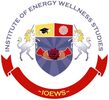- Home
- Aromatic Sciences
- Energy Field
-
Other Practitioner Programs
- Kinesis
- TOUCH FOR HEALTH
- KINESIS LEVEL 1 AND TOUCH FOR HEALTH LEVEL 1
- KINESIS LEVEL 2 AND TOUCH FOR HEALTH LEVEL 2
- KINESIS LEVEL 3 AND TOUCH FOR HEALTH LEVEL 3
- KINESIS LEVEL 4 AND TOUCH FOR HEALTH LEVEL 4
- KINESIS MASTERY 5
- KINESIS SYNTHESIS
- Brain Gym Level 1
- Brain Gym Level 2
- Kinesis Testing and Dowsing Technique for Electro-Magnetic Pollution
- Tools of the Trade
- Online School
- Home
- Aromatic Sciences
- Energy Field
-
Other Practitioner Programs
- Kinesis
- TOUCH FOR HEALTH
- KINESIS LEVEL 1 AND TOUCH FOR HEALTH LEVEL 1
- KINESIS LEVEL 2 AND TOUCH FOR HEALTH LEVEL 2
- KINESIS LEVEL 3 AND TOUCH FOR HEALTH LEVEL 3
- KINESIS LEVEL 4 AND TOUCH FOR HEALTH LEVEL 4
- KINESIS MASTERY 5
- KINESIS SYNTHESIS
- Brain Gym Level 1
- Brain Gym Level 2
- Kinesis Testing and Dowsing Technique for Electro-Magnetic Pollution
- Tools of the Trade
- Online School
